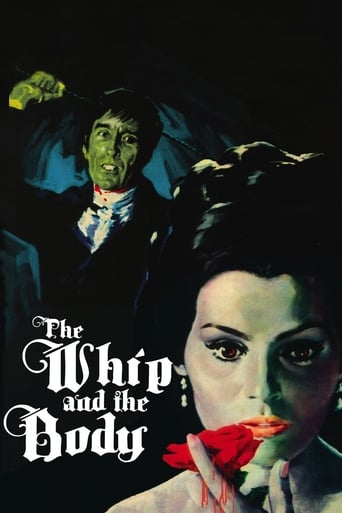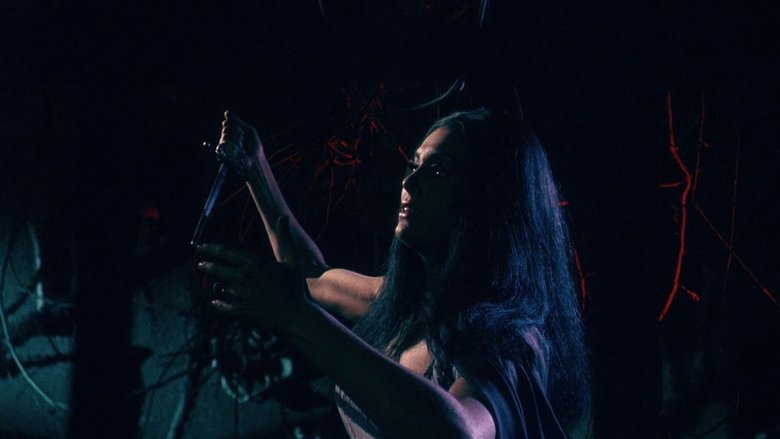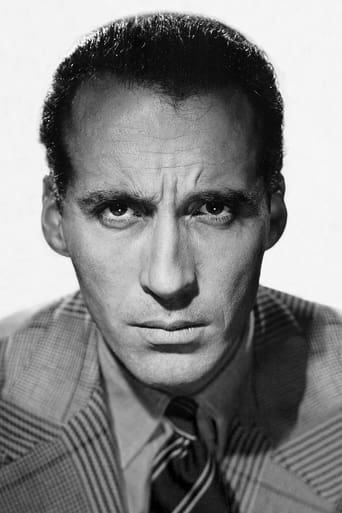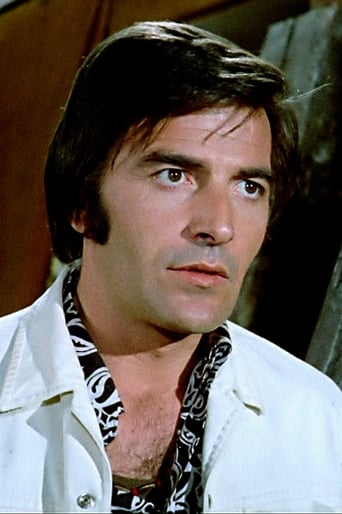The Whip and the Body (1963)
In the 19th century, a sadistic nobleman terrorizes the members of his family. He is found dead, but his ghost soon returns to haunt the residents of his castle.
Watch Trailer
Cast


Reviews
How sad is this?
It's entirely possible that sending the audience out feeling lousy was intentional
By the time the dramatic fireworks start popping off, each one feels earned.
The film never slows down or bores, plunging from one harrowing sequence to the next.
Whip and the Body, The (1963) ** 1/2 (out of 4) Christopher Lee plays a sadistic nobleman who returns home to terrorize his family after leaving home years earlier after forcing his girlfriend to commit suicide. Soon he is found dead with his throat slit and soon after he ghost begins to appear as more bodies start to pile up. All the praise thrown on director Bava is certainly needed because it's obvious he could take some mud and make it look wonderful but that doesn't mean all his films turn out great. I think the biggest flaw with this film is the rather weak story, which doesn't really contain any shocks and it's fairly simple to figure out what's going on so in the end, when the climax happens, there's no real shocks. Christopher Lee turns in a terrific performance, even though, for some reason, his voice is dubbed in the English language version. That fantastic look that Lee brings says all we need to know about his character. The supporting cast isn't as impressive but they fit their roles just fine. The cinematography is top notch and the use of lighting is also what makes this film stand apart from others in this era.
The director's credit at the beginning of 1963's "The Whip and the Body" is for somebody named John M. Old, but the film's deliciously morbid atmosphere and superb use of lighting quickly attest that the director here can really be none other than Italian master Mario Bava. His third horror masterpiece in four years, following the seminal works "Black Sunday" and "The Evil Eye," "Whip" tells the story of Kurt Menliff, a sadistic brute who returns to his father's moldering castle by the sea in a nameless, timeless land and renews his sadomasochistic relationship with sister-in-law Nevenka...even after he himself is murdered! But has Kurt's ghost really returned from the grave, or is this all a figment of Nevenka's obsessed mind? Suggesting nothing less than an Italian Gothic version of a Harlequin romance as written by the Marquis de Sade, "Whip" features impeccable acting by Christopher Lee as Kurt (one of his best roles, he long maintained, despite the fact that he is offscreen half the time) and Israeli actress Dahlia Lavi (who I've never seen look more beautiful) as the masochistic, lash-loving Nevenka. The film is deliberately paced for maximum atmosphere, and Bava's camera work and pools of lurid lighting really are things of beauty to behold. Matching the stunning visuals perfectly is a lush, romantic score by Carlo Rustichelli that, in a just universe, would be recognized as a classic on the order of "Lara's Theme" from "Doctor Zhivago." This gorgeous composition for piano and strings gently surges through the film and adds immeasurably to its already moody, dreamlike aura. The great-looking DVD from VCI that I just watched features the full European cut of "The Whip and the Body," with all the (once controversial, now fairly tame) S&M whippings intact. The film has been excellently dubbed, and comes with a raft of fine extras. It is a perfect picture for the discriminating horror fan looking for a challenging, beautiful entertainment. Highly recommended.
This is a very good early film with Christopher Lee who portrays in this film a very evil man who loves to cause troubles an simply enjoys giving one particular young pretty woman a whipping on her back after tearing off her blouse. This whipping goes on and on and then they manage to make love right after she is almost beaten to death. This woman who is getting all the beatings is a newly wed to another man however, she did know Christopher Lee from her past and liked his rough and horrible way of making love. This is a very good Christopher Lee classic where he is not really the star of the film, but manages to take complete control of almost every situation right to the bitter ending. The beatings get boring after awhile and it is really too drawn out, but lets remember it was 1963 and there really was no sexy scenes at all, only BEATINGS!
This is undeniable-proof that Mario Bava was one of the best horror-directors of all-time. The maestro's use of color and unnatural-lighting is stellar, and unique. There are few films that convey desire so-deeply, so-yearningly, but also depict repulsion just-as-well; and aren't the two inextricably-entwined in horror? It is perhaps the best Gothic-horror film of the 1960s, bar-none, and that includes some of Hammer's finest. In-fact, you can see that in Bava's, Hammer's and Roger Corman's 'Gothic' films, there is a dialog going-on. They copied-each other, but few would be so-daring as Bava, as this is the best S&M horror-film, and the sexiest too. Dahlia Lavi couldn't be more desirable in this, and the S&M depictions are pretty racy, even the standards of 2006. For this reason, it was radically-cut in most regions-of-distribution (except-Germany!). 'Black Sunday/Mask of Satan' (1960) may have been the 'Citizen Kane' of horror, but this is Bava's 'Tales of Hoffmann' (1951), and all these films should be seen by serious horror-fans. Corman, AIP and Hammer had blood, brains, bulging-boobs and cleavage, but not this! It is probably the most-underrated film I have ever seen. A film like The Whip and the Body has to be watched-repeatedly to truly-appreciate, and it gives-up secrets with each-viewing. What has always been a shoddy dubbing-job has marred this film's reputation and relegated it to-the-margins of the horror-genre. The Whip and the Body is the essence of what truly makes-up horror, especially Gothic-horror, and it is psycho-sexual-tension. If you cannot appreciate such literary-concerns, or the eternal-issues involving the human-condition, you aren't going to enjoy it, because it is a pretty literary-film. It is poetic, and strongly-erotic. It is also, decidedly-not 'PC', but who cares anymore about that? Art never is, nor should it be, 'acceptable.' It simply is.Outside-of Hitchcock, psychological-horror doesn't get much-better than this masterpiece. It is a ghost-story, and so-much-more. It is a study of sexual-obsession, and the demons that haunt all relationships. Who has not been haunted by a lover from one's past? If you haven't, you are missing-something important in the human-condition, so go out and find it. The archetype of the 'demon-lover' is in full-bloom in this masterpiece, and it is titillating and emotionally-powerful for it. It should also be said the film has a few-similarities to Ricardo Freda's classic, 'The Ghost' (1963), which is likely due to the era it was made-in, and the fact that Bava was frequently Freda's assistant-director. Guilt plays-its-part in the films of both directors, usually manifesting as an apparition. Catholic-guilt? This is likely, but neither Bava or Freda can be typed so-easily, they were non-conformists in their stylizations, with Bava even showing a connection with Slavic-literature in the works of Gogol and Tolstoy. He borrowed from a lot of literary-sources, including Lovecraft, making it into something that was his own. The director was also known for his belief in Italian folk-superstitions, and he drew from Italy's folklore, and Roman mythology as well.As far as I can tell, much of the 'color-coding' in this film for given-characters was relatively-new when Bava attempted-it. Powell & Pressberg's 'Tales of Hoffman' is the closest I can recall with this style conveying horror so effectively. Lee's-character (Kurt Menliff) is portrayed in the cobalt-hues of blue ever to grace a Technicolor-film, suggesting the character spectral-nature. Other times, Lee is lit with a green-light on his face, like Osiris. I'd say some aspects of the film resemble the myth of the resurrection of Osiris by Isis (through sexuality). Lee is the dying-god, Nevenka his Astarte or Isis. Scenes of passion with Dahlia Lavi are decidedly red-in-hue, while when the apparition of 'Kurt' gives us scenes that are green or blue. One scene has Lavi walking-down a hallway while each side of her face keeps changing-colors as her emotions change. The whole approach is a kind of expressionism of color, the hues conveying the internal-states of the characters. The Technicolor-process made colors so deep! This is film-as-artifice, and we should never forget this while viewing the works of a director like Bava, he reveled in this artificiality. This helped him emphasize the thematic visually, rather than through dialog and a linear-narrative. Yes, it's supposed-to look 'fake', it's a film-reality, like in a Tarantino-film. This movie has suffered-enough! The story-line isn't very difficult to follow, it's just the poor-dubbing by the Italian production-company. When a film is this low-budget (for 1963), it's usually post-production that suffers, and it does here. The owners of this property should record Mr. Lee's dialog for this film-- he has offered, after-all, so why-not? It's insane to think the producers of a film with Christopher Lee would not see-fit to use his actual-voice, because he is an actor who was known for it (and still is).







